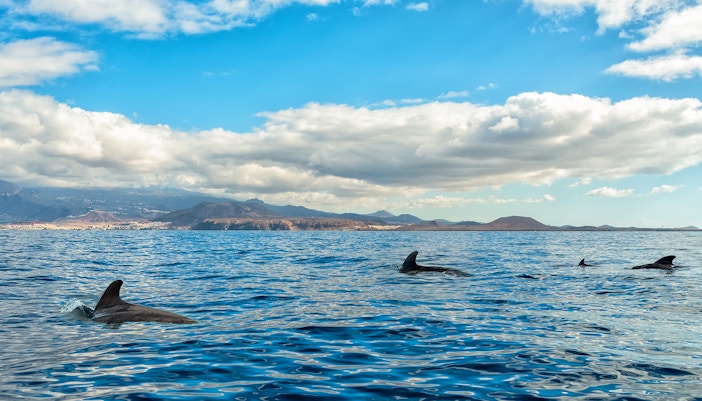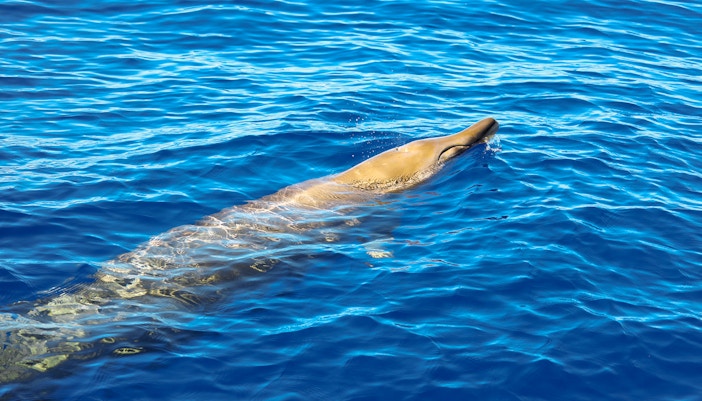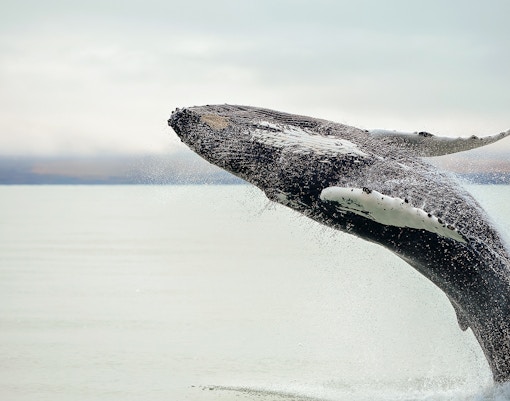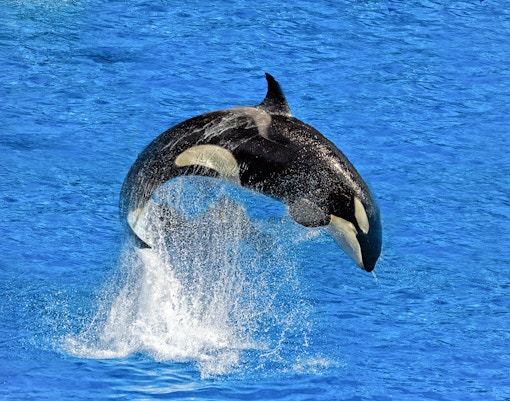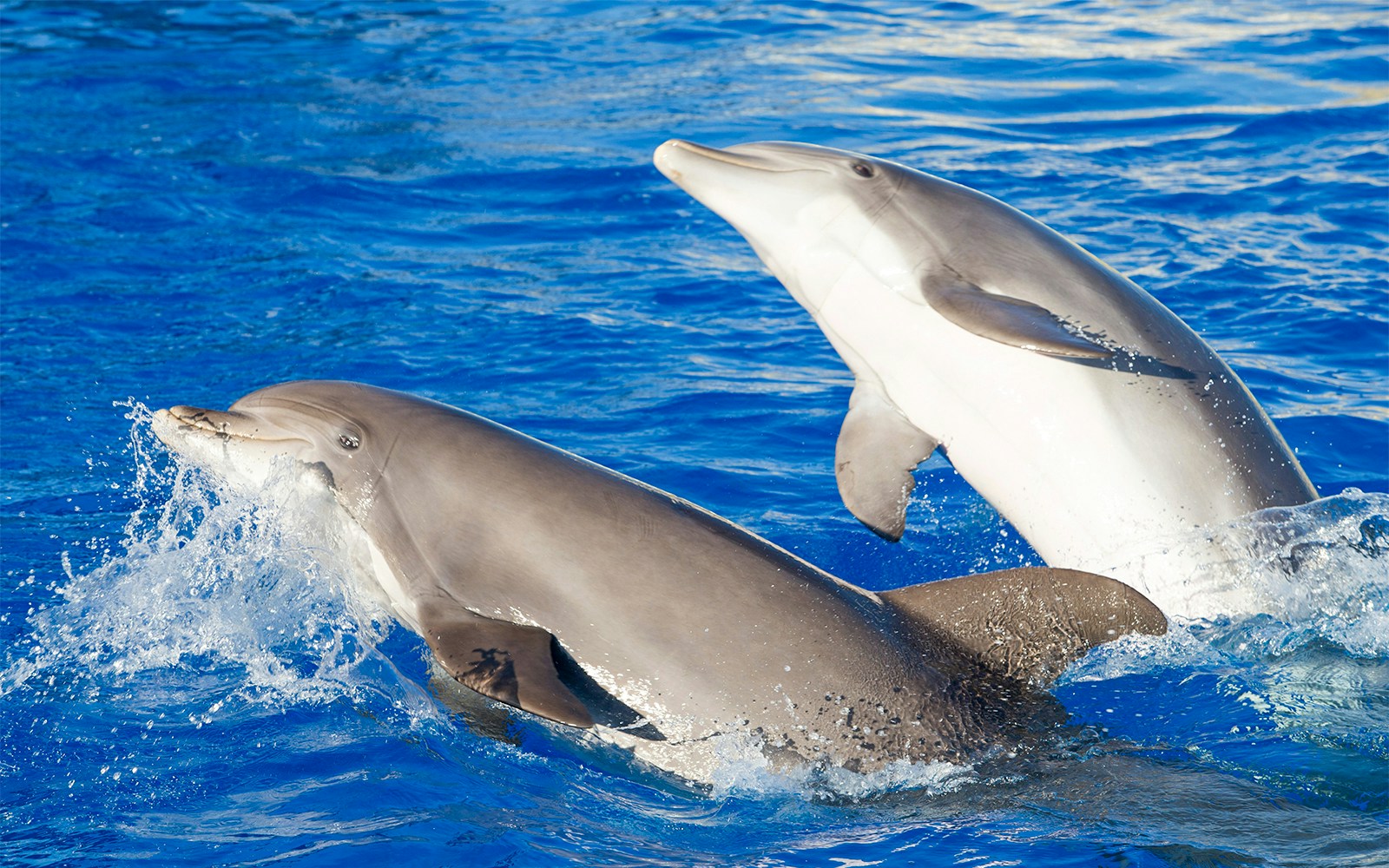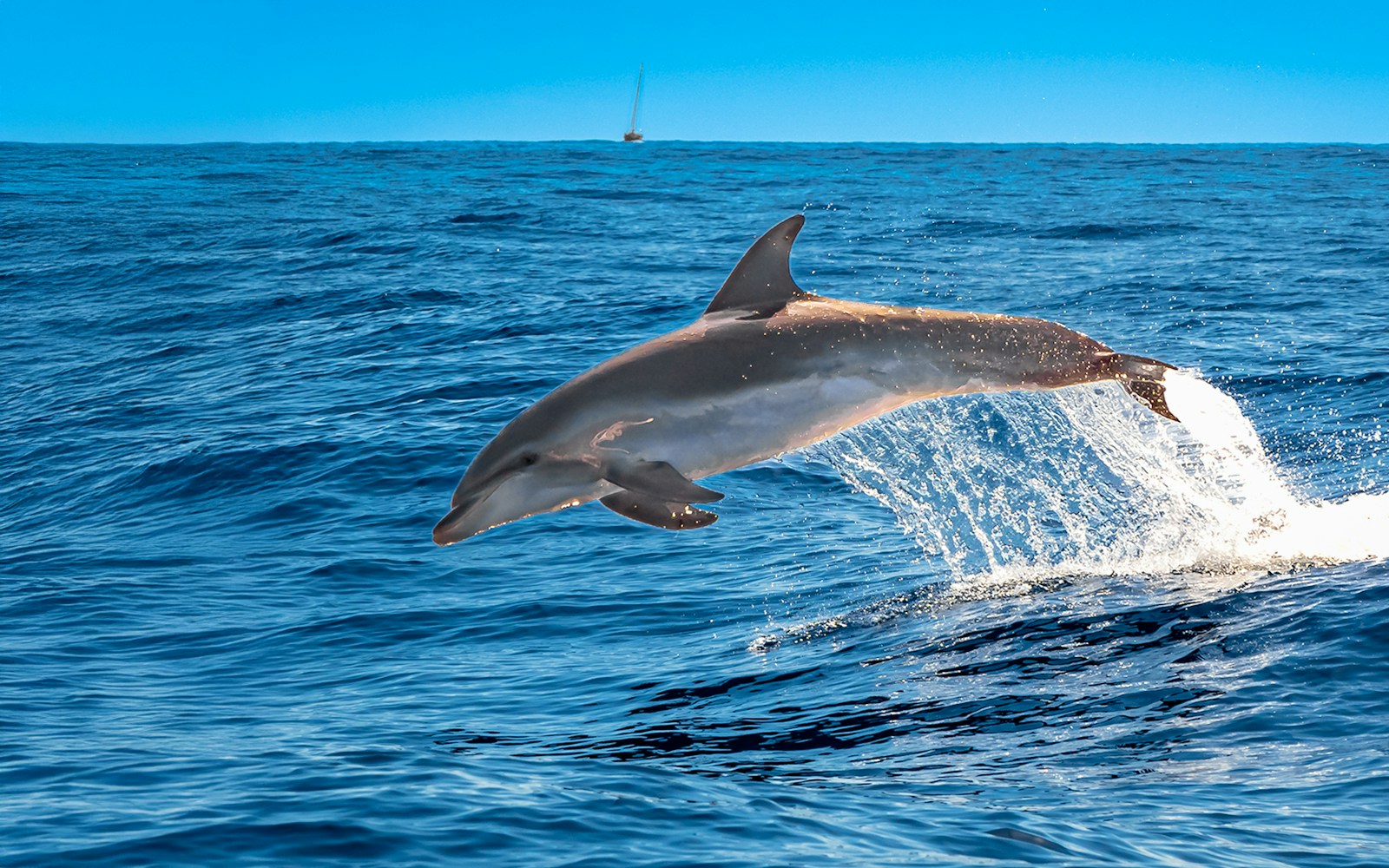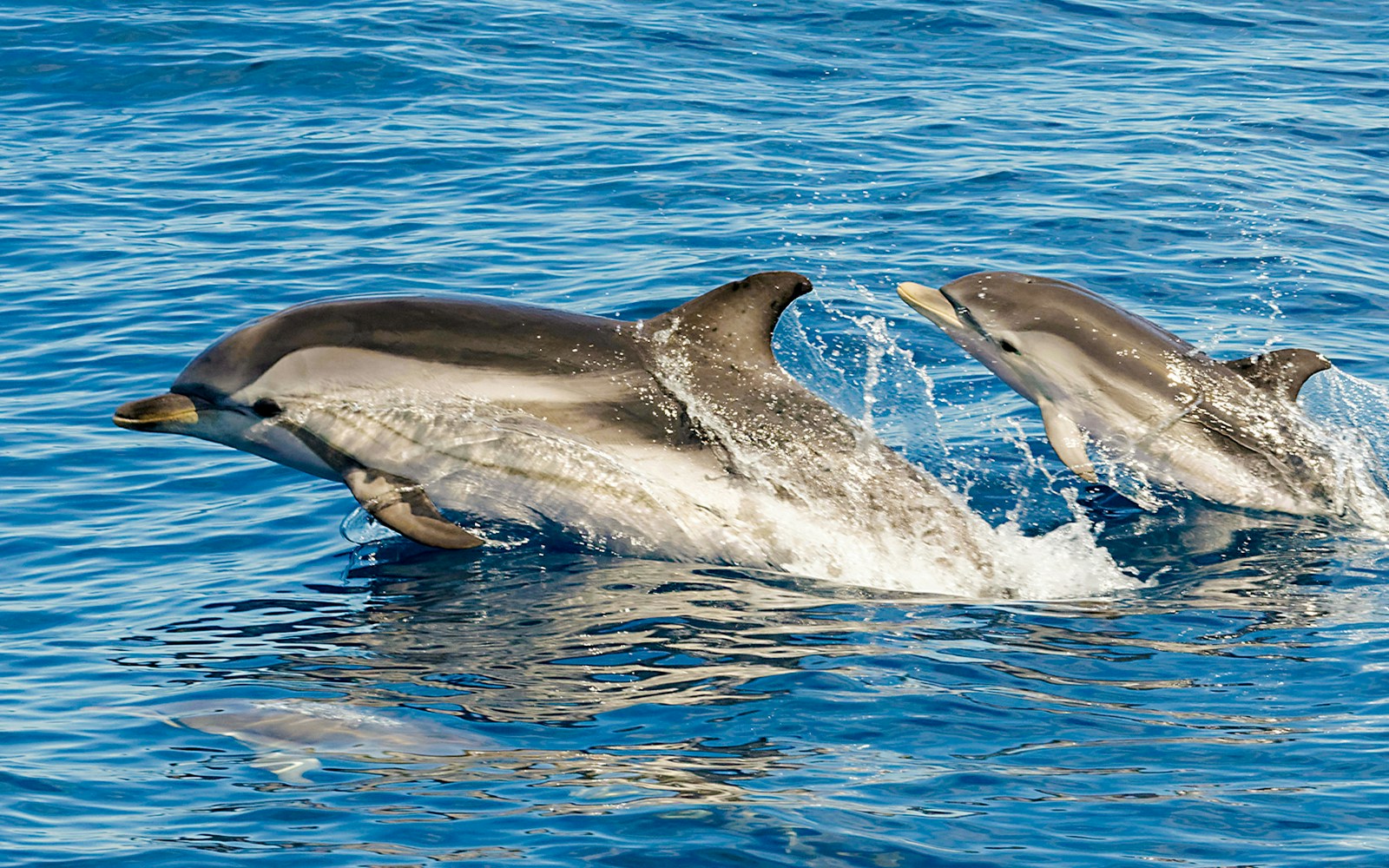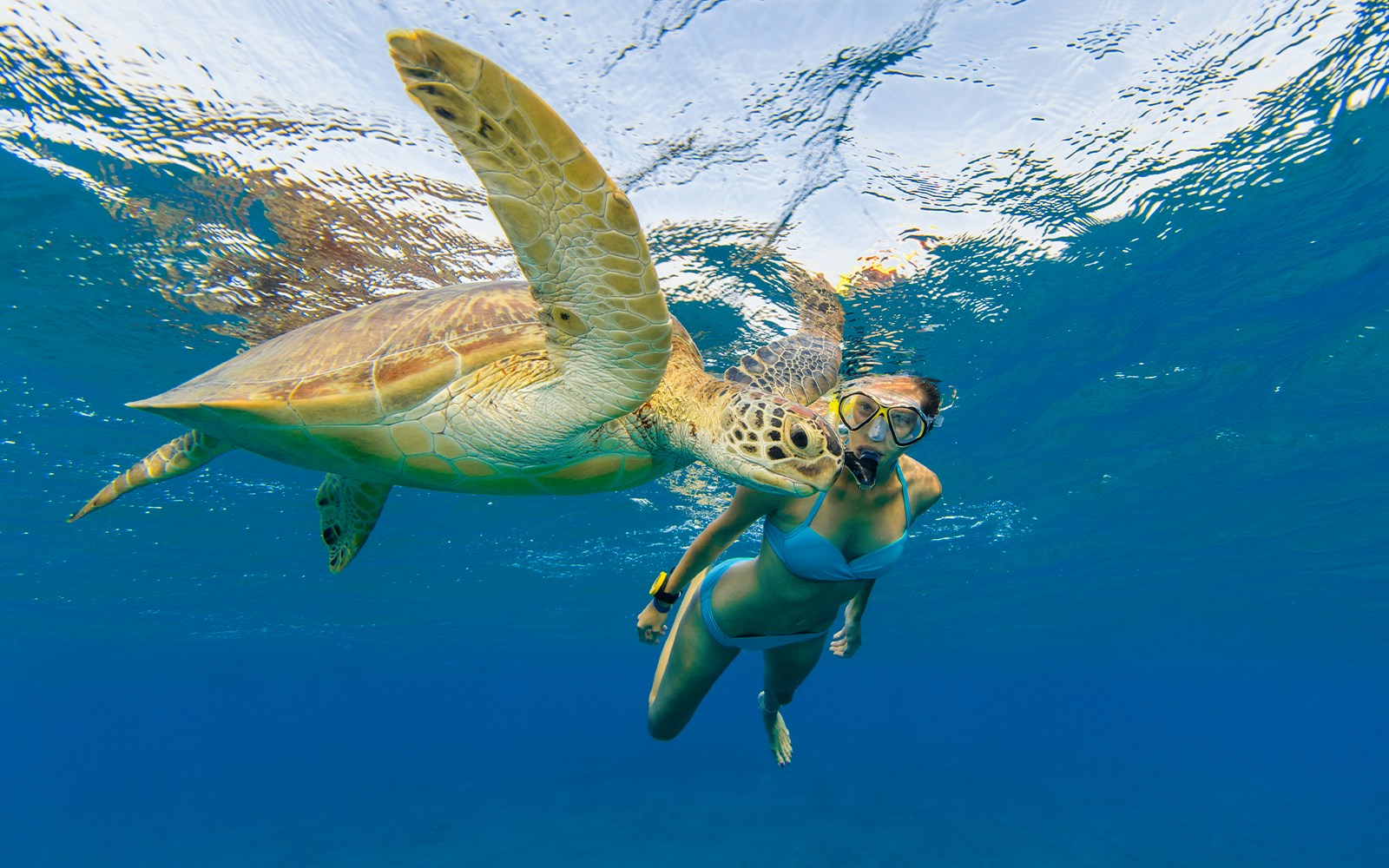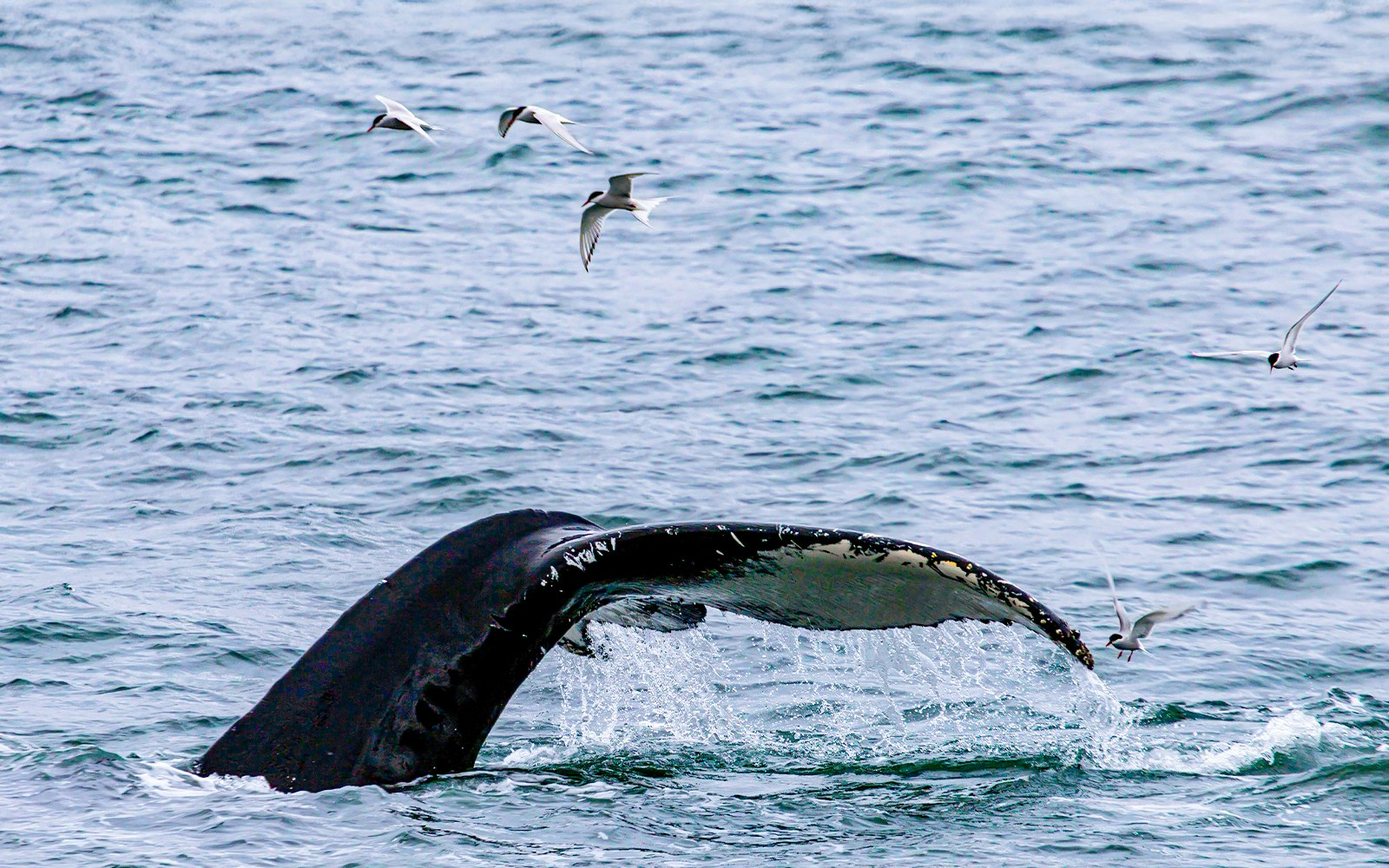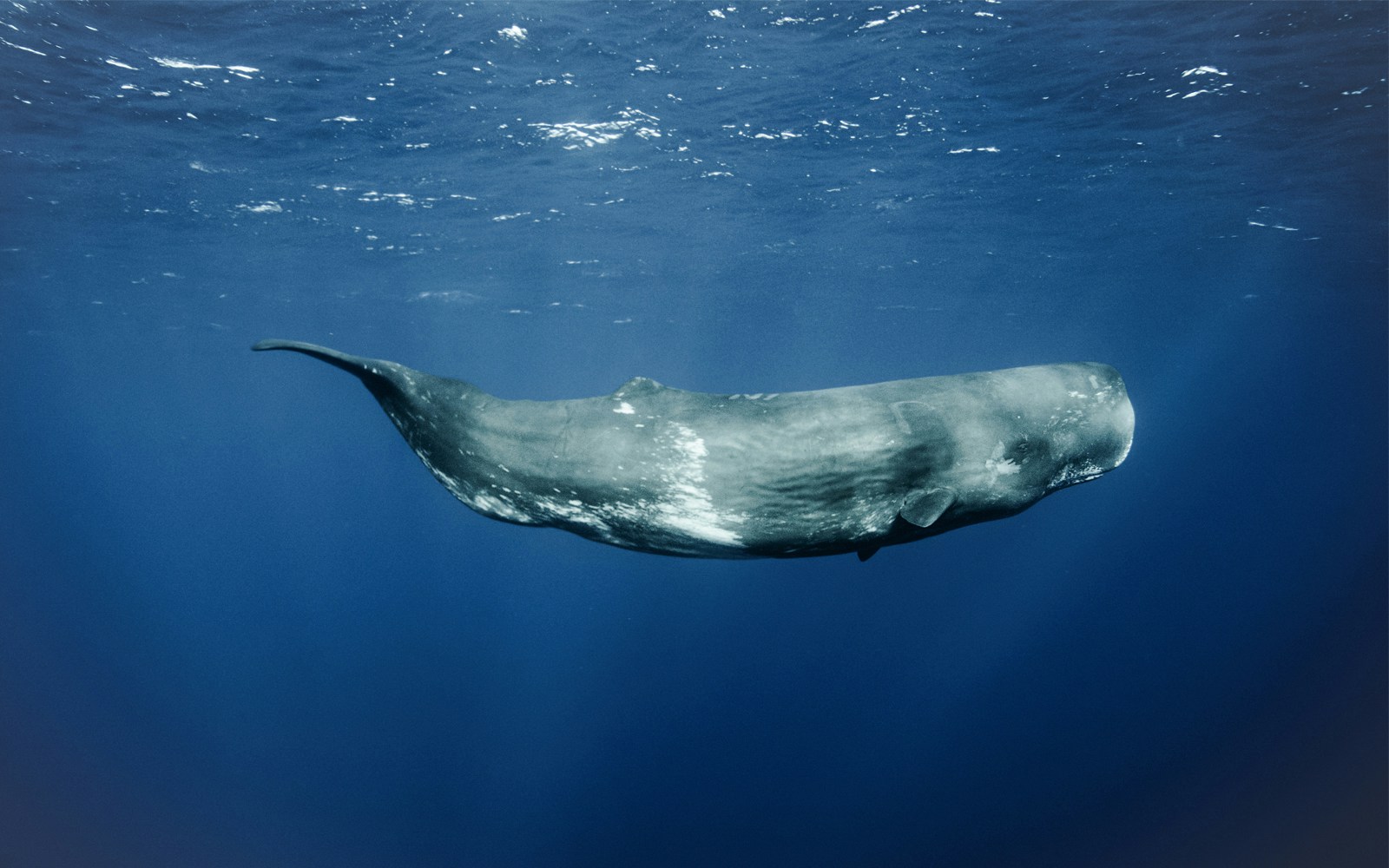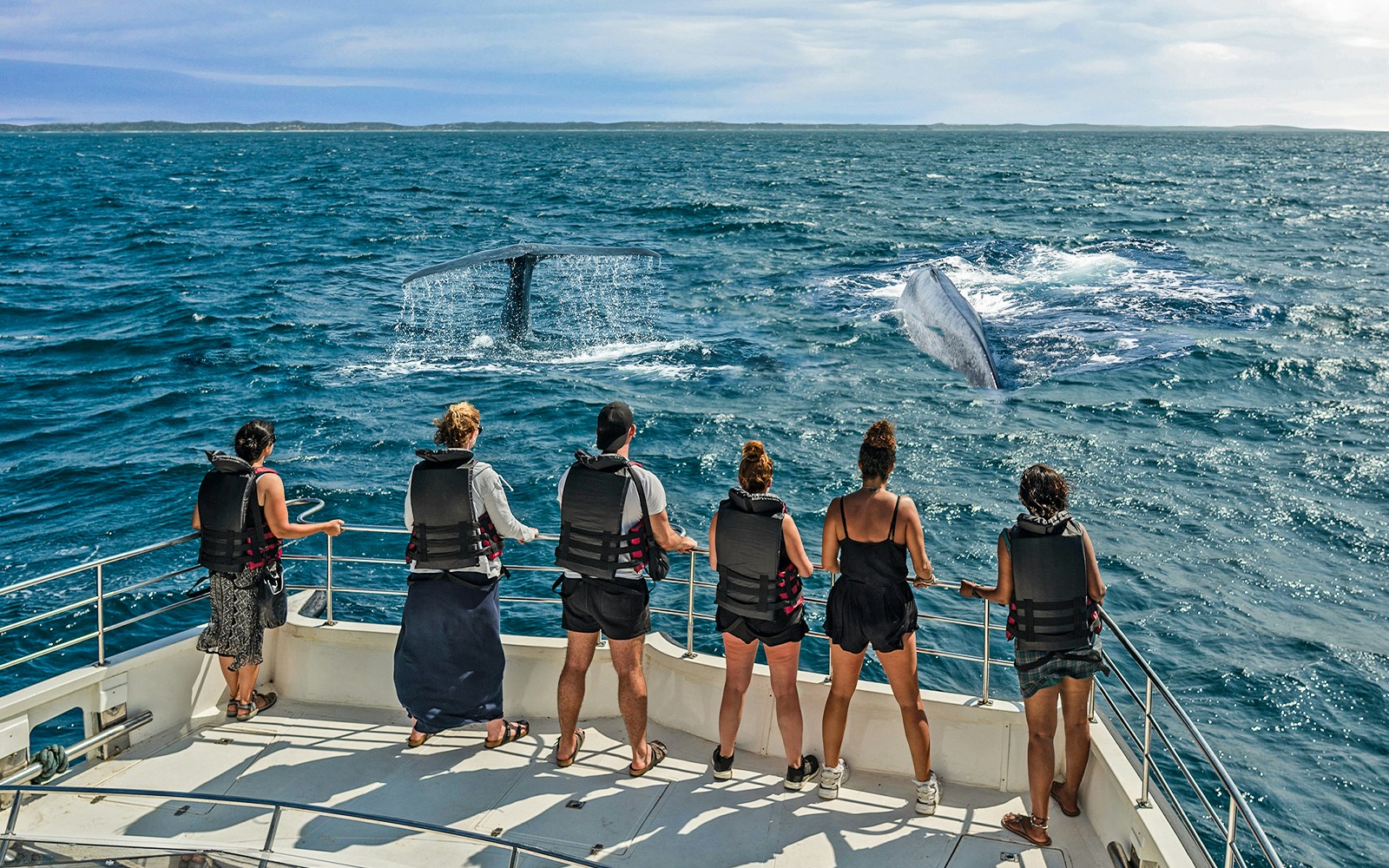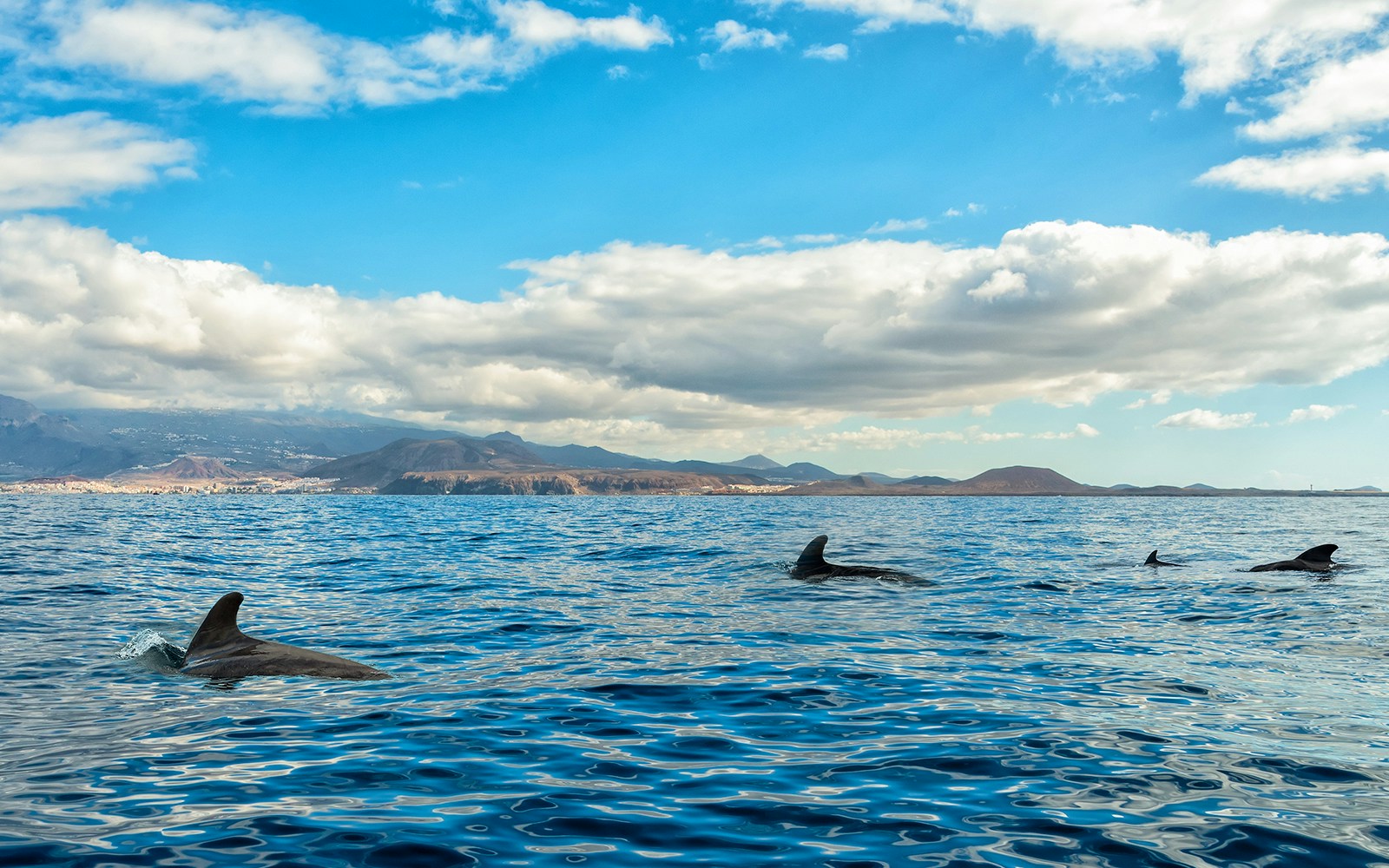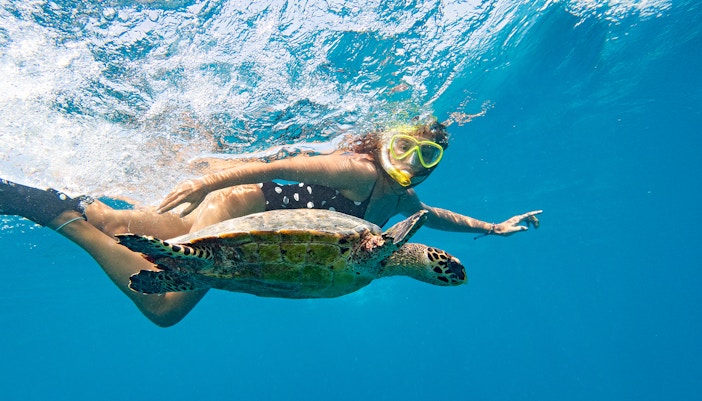When to see: All year round
Spotting tips: Look for large, bulbous heads and smooth black backs moving in unison. Pods almost always travel together.
Behavior and social life:
- Extremely social, forming tight-knit pods.
- Communicate with clicks and whistles to coordinate hunting and social activities.
- Sometimes strand themselves in groups if one member is sick.
Hunting: Feed mainly on squid and small fish, often diving 600+ meters.
Fun facts: Can live up to 45 years; display coordinated dances when swimming in pods.
